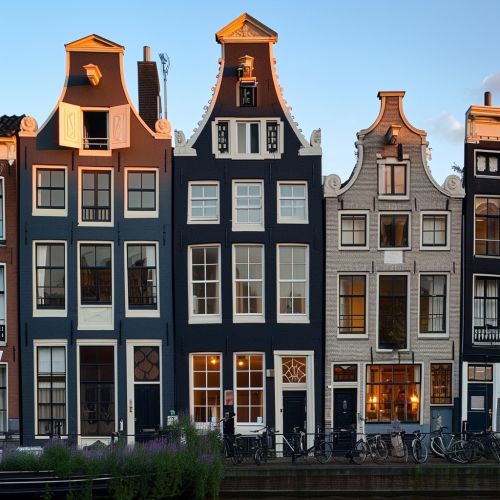Amsterdam
History
Amsterdam's history dates back to the 13th century when it was established as a small fishing village by the river Amstel. The city's name derives from Amstelredamme, indicative of the city's origin around a dam in the river Amstel. Dam Square, the city's oldest square, still carries the name of this original dam.
During the 14th century, Amsterdam was granted city rights, and it quickly grew into one of the most important ports in the world during the Dutch Golden Age of the 17th century. The city's wealth during this period is reflected in the opulent architecture of the canal houses and the Rijksmuseum's vast collection of art and artifacts from this era.


Geography
Amsterdam is located in the western part of the Netherlands, in the province of North Holland. The city is built around a network of canals and is known for its flat landscape, which is characteristic of the country. Amsterdam is located below sea level, and its geography is a testament to the Dutch mastery of water management, as evidenced by the intricate system of dykes, canals, and pumping stations that prevent the city from flooding.
Architecture
Amsterdam's architecture is diverse and reflects the historical periods of its growth. The oldest buildings are generally located in the city center, with architecture dating back to the Middle Ages. The Oude Kerk ('Old Church') and the Begijnhof are among the oldest surviving buildings in Amsterdam.
The city is also known for its canal houses, built during the Dutch Golden Age. These houses are characterized by their narrow facades, ornate gables, and large windows. The Anne Frank House, where Anne Frank and her family hid during World War II, is one of these canal houses and is now a museum.
In the 19th and 20th centuries, the city expanded, and new architectural styles emerged. The Amsterdam School style of architecture, characterized by its use of brick and ornate details, is a notable example of this period.
Culture
Amsterdam is a cultural hub, boasting a wide range of museums, galleries, and performance venues. The city is home to the Van Gogh Museum, which houses the largest collection of Van Gogh's works in the world, and the Rijksmuseum, the Dutch national museum dedicated to arts and history.
The city also has a vibrant performing arts scene, with institutions like the Royal Concertgebouw and the Dutch National Opera & Ballet contributing to the city's cultural richness.
Amsterdam's literary culture is also significant, with the city being home to the International Institute of Social History, one of the world's largest documentary and research institutions.
Economy
Amsterdam's economy is diverse and robust, with key sectors including finance, creative industries, and tourism. The city is home to the Amsterdam Stock Exchange, the oldest stock exchange in the world. Many multinational companies have their headquarters in Amsterdam, including Philips and ING.
The creative industries, including fashion, design, and advertising, are also significant contributors to the city's economy. Amsterdam's vibrant cultural scene and its status as a global city make it an attractive location for creative professionals.
Tourism also plays a crucial role in Amsterdam's economy. The city's rich history, combined with its diverse cultural offerings and picturesque canals, attracts millions of visitors each year.
